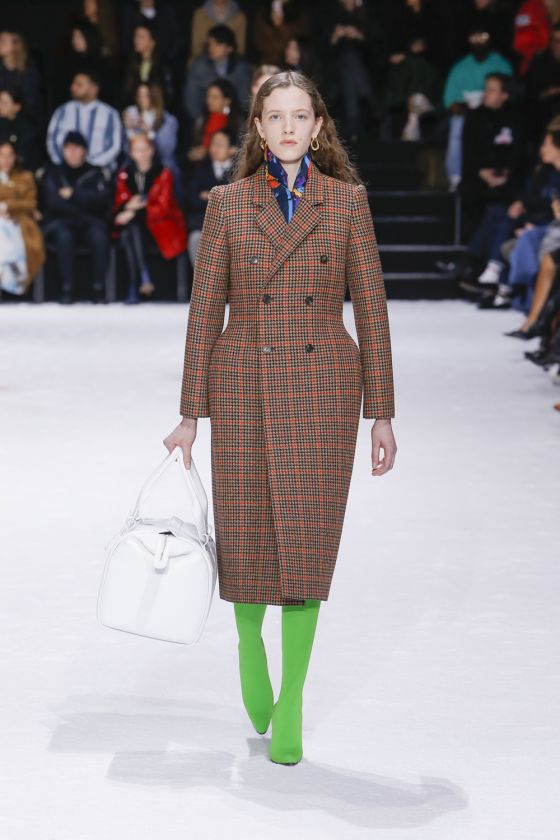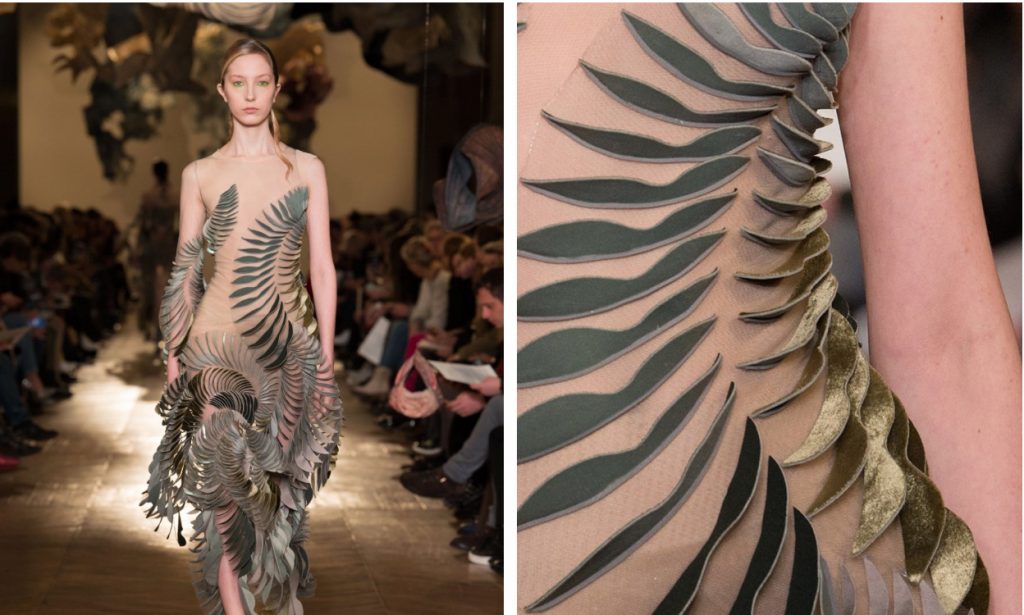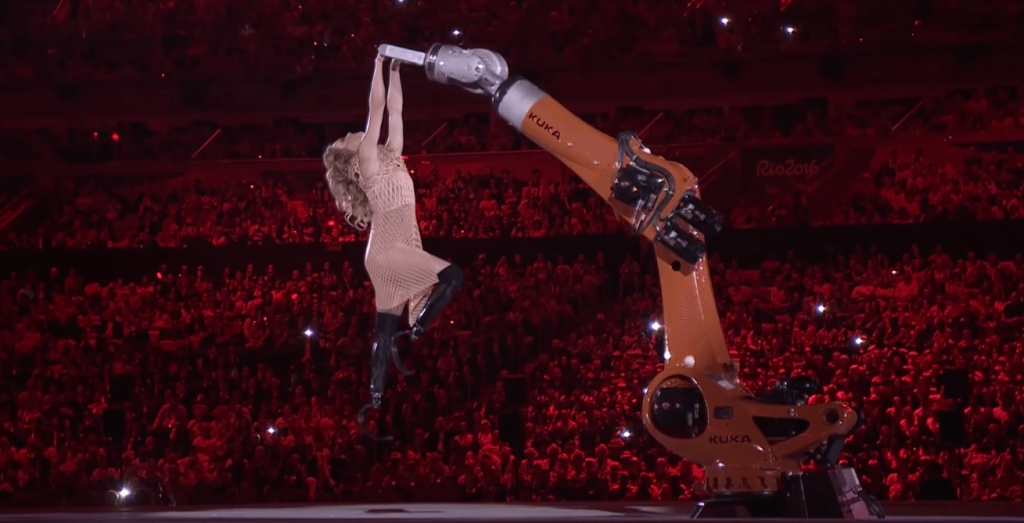In 2013 burlesque dancer and artist Dita Von Teese modelled the first fully 3D printed dress in New York, ushering in a new generation in fashion design. Because of its potential for optimizing production processes, customization, and cost, 3D printing is expanding the field of what is possible in fashion. Below are a few examples of noteworthy innovations of 3D printing in fashion.
Balenciaga: Digital tailoring
Balenciaga’s Autumn/Winter 2018 collection innovates the world of traditional tailoring as we know it. In order to optimize the fit of their jackets, Balenciaga creative director Demna Gvasalia digitally tailored his collection with the help of 3D scans that he took of the models’ bodies. As a result, there are only two seams on the jackets: at the side and at the arm hole.

After printing the 3D printed scans, the garments were moulded and cast with a lightweight foam. The finished jackets were produced by bonding materials such as tweeds and velvets to the foam.
The collection was shortlisted for a 2018 3D Printing Industry Award in the 3D Scanning Project or Application of the year category.
Iris van Herpen: unprecedented designs
Dutch designer Iris van Herpen has created a line emphasising graceful, florid shapes thanks to 3D printing technology. Introduced at the 2018 Paris Fashion Week, her Spring/Summer 2018 collection of 21 pieces resorts to advanced digital technology such as laser-cutting, parametric design, and 3D printing.

Van Herpen used three techniques to produce the collection: in ‘Foliage’, leaf patterns are printed onto a fine, semi-transparent fabric. The shimmering ‘Data Dust’ are laser-cut according to computational algorithms used to make parametric patterns. Finally, the ‘Entropy’ process bonds mylar polyester with leather, and liquid fabric.
Mingjing Lin, Tsai-Chun Huang, and Sinterit: Beijing opera costumes
Mingjing Lin Tsai-Chun Huang, fashion designers and researchers at London’s Royal College of Art, teamed up with Polish SLS 3D printing company Sinterit to craft the costumes for a production of Farewell My Concubine.

3D printed textiles made on the Sinterit LISA and using Thermoplastic polyurethane were combined with traditionally pleated fabrics. Designer Mingjing Lin says that although 3D printing has been used in fashion shows in the past, her goal is “to test or challenge whether 3D printed textiles could be used in more interesting bodily practices, whether 3D printing could have more fluidity and more dynamics. And I believe this technology has a lot more to offer in terms of body movement.”
Danit Peleg: tailoring for a Paralympic Opening Ceremony
Israeli designer Danit Peleg was the mind behind the dress worn by American snowboarder Amy Purdy for her dance number with a robot during the 2016 Paralympic Opening Ceremony. Inspired by Boticelli’s The Birth of Venus, the dress printed using a flexible, flesh-coloured filament called FilaFlex and made by Recreus. Working with a TPE thermoplastic elastomer base polyurethane enabled Peleg to produce a dress that would allow for various dance moves.

Studio Bitonti: 3D product design
Studio Bitonti, the company known for designing and printing Dita Von Teese’s 2013 3D printed gowns, are shifting their focus towards “a lab for emerging design methodologies, cutting edge materials, and fabrication research”, as Francis Bitonti explains. Originally known for their limited editions using advanced 3D printing technology, the Studio now aims to provide its clients with innovative technologies and enable them to work on a variety of products and processes.

The studio services range from traditional to state-of-the-art manufacturing methods, with a strong focus on 3D printing and product design. Regarding the nature of their new services, Bitonti says:
“We are working on complex interdisciplinary design problems, and we want to enable people to create the next generation of products.”
Keep up to date with the latest developments in 3D printing. Subscribe to the 3D Printing Industry newsletter, follow us on Twitter and like us on Facebook.
Featured image shows 3D printed dresses by Dutch designer Iris van Herpen. Image via Iris van Herpen


